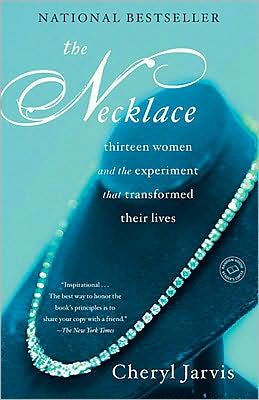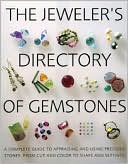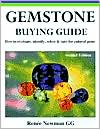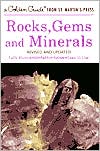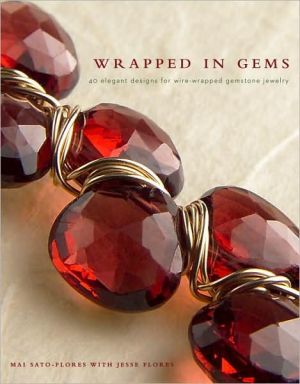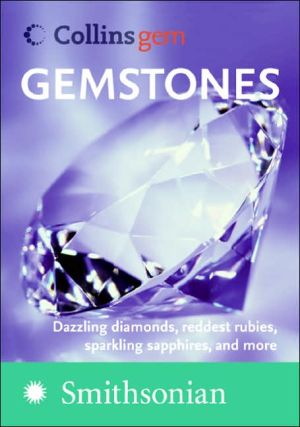The Necklace: Thirteen Women and the Experiment That Transformed Their Lives
One day in Ventura, California, Jonell McLain saw a beautiful diamond necklace in a jewelry store window and wondered: Why are personal luxuries so plentiful yet accessible to so few? What if we shared what we desired? Several weeks, dozens of phone calls, and one great leap of faith later, Jonell and twelve other women bought the necklace together–to be passed along among them all.\ The dazzling treasure weaves in and out of each woman’s life, reflecting her past, defining her present,...
Search in google:
One day in Ventura, California, Jonell McLain saw a beautiful diamond necklace in a jewelry store window and wondered: Why are personal luxuries so plentiful yet accessible to so few? What if we shared what we desired? Several weeks, dozens of phone calls, and one great leap of faith later, Jonell and twelve other women bought the necklace together–to be passed along among them all.The dazzling treasure weaves in and out of each woman’s life, reflecting her past, defining her present, making promises for her future. Lending sparkle in surprising and unexpected ways, the necklace comes to mean something dramatically different to each of the thirteen women. With vastly dissimilar histories and lives, they transcend their individual personalities and politics to join together in an uncommon journey–and what started as a quirky social experiment becomes something far richer and deeper.Crystal Goldman - Library JournalFreelance journalist Jarvis (The Marriage Sabbatical: The Journey That Brings You Home) explores the lives of 13 women from Ventura, CA, from diverse social, educational, and political backgrounds who together purchased an expensive diamond necklace that was beyond their means individually. Cost: $37,000. Jonell McLain first saw the 16.25 carat necklace in a jeweler's window and came up with the idea for a group purchase. What began as a social experiment about ownership and American consumerism became much larger as the necklace took on a life of its own. The group of women, all over 50, used the necklace to generate attention for various fund-raising activities and to raise social awareness in their community. While Jarvis's prose is a bit sentimental, she does offer an engaging snapshot of what it means to be a middle-aged woman in contemporary America. Underlying the light treatment applied to each of the 13 narratives and mini-biographies that make up this work are the deeper issues of aging, health care, retirement, relationships, divorce, sex, and child rearing. A highly readable book recommended for public libraries and any library with an interest in women's studies or studies on growing older. [See Prepub Alert, LJ5/1/08.]
Chapter One\ Jonell McLain, The Visionary\ Making an idea happen\ ...\ Jonell McLain was sitting at her desk looking at the piles of paper surrounding her, struggling not to feel overwhelmed. She wondered why she could never clear her desk, never cross off the forty-five tasks on her to-do list. Were there always forty-five things on that list? It sure seemed so. She felt like Sisyphus, the king in the Greek legend who was condemned to push the same rock up a mountain, over and over. Some days she felt like all she accomplished was moving piles. Some papers she could swear she moved a hundred times. Part of the problem was that she was full of ideas, so she was continually adding projects to the list. Executing them, well, that was a skill she hadn’t yet mastered.\ Today, the list didn’t make her queasy as it often did. She’d just finished a deal on a house and so was feeling the high that real estate agents feel when they finally receive their big commission checks. This one represented three months of work and emotional exhaustion. People bought homes when they were undergoing major life transitions, so naturally they were on edge. The shock of prices on the West Coast made those buyers moving to California especially anxious. Because the work was so stressful, Jonell always rewarded herself after each closing.\ She hadn’t decided what to buy herself this time, so she headed to the mall just to buy her clients a box of See’s candy, part of the gift basket she’d have welcoming them to their new home.\ The Pacific View Mall was the only mall in Ventura, a California beach town sixty miles north of Los Angeles. Jonell moved her wiry frame quickly through the dusty-pink shopping enclave, stopping only to glance in the window of Van Gundy & Sons, a decades-old, family- owned jewelry store, the Tiffany’s of Ventura. Usually Jonell’s glances were as quick as her strides, but this time she stopped. She stared.\ In the center display case a diamond necklace glittered against black velvet. A few years earlier she’d searched unsuccessfully for a simple rhinestone necklace to wear to a formal event. Now here it was, the exact one she’d had in mind. She recognized the style as the necklace version of the tennis bracelet, so dubbed after tennis champion Chris Evert lost her diamond bracelet during the 1987 U.S. Open and stopped the match to search for it. The diamonds were strung in a single strand all the way to the clasp, the center diamond the largest, the two closest to the clasp the smallest. The gradations were minuscule, the effect breathtaking.\ But this was Van Gundy’s. There was no way this necklace was made of rhinestones.\ Jonell rarely wore good jewelry, though she owned her share of it— diamond wedding rings from two husbands, 14-karat-gold earrings, pricey watches. Luxury jewelry was something else. Hmm, she thought, wonder what a really expensive piece of jewelry looks like up close? What it would feel like to wear something so lovely and extravagant?\ On a whim she entered the store. “Could I see the necklace in the window?” she asked nonchalantly, as if she did this every day.\ She reached up to touch the delicate gold chain she wore. Back in 1972 a boyfriend had given her this necklace with the peace symbol pendant, and in 2003, at the start of the war in Iraq, she’d put it on again. She placed the diamond stunner over her old gold charm. It was, she thought, simply exquisite—and exquisitely simple.\ She took a breath, and as she breathed out, she asked the price.\ “Thirty-seven thousand dollars.”\ Jonell couldn’t stop the gasp. All she could think was Who buys a thirty-seven-thousand-dollar necklace?\ She looked in the mirror again. She couldn’t help but think about the choices she’d made in her life, the ones that guaranteed she could never afford a necklace like this. She thought about how different her life might have been if she’d married a wealthy man or invested herself more in a career. If she’d worked harder, maybe she could have generated the kind of money that would enable her to indulge in this kind of luxury. In the end, none of this mattered, not really. In a world overflowing with need, the idea of owning a thirty-seven- thousand-dollar necklace was morally indefensible to Jonell, who’d mentored disadvantaged kids for six years. Lost in these thoughts, she heard only snippets of the saleswoman’s description: 118 diamonds . . . brilliant-cut . . . mined from nonconflict areas . . . 15.24 carats.\ Fifteen carats sounded ostentatious and Jonell didn’t like ostentation. She appraised it again. There was nothing ostentatious about this necklace. The diamonds were so small, just right for her five-foot-two-inch frame, yet circling clear around her neck they felt substantial. What was magnetic was their radiance. She’d never seen diamonds shimmer like these.\ Jonell hesitated to take off the necklace. After admiring it another minute, she laid it back on the counter and thanked the saleswoman for her time.\ Over the next three weeks Jonell was surprised how often she thought about the diamond necklace. When she was back at the mall with her eighty-six-year-old mother, Jonell noticed the necklace still in the window. “Mom, I want to show you something,” she said, excitedly leading her mother into the store as if she were seven and heading for her first Barbie. “Mom, try it on.” Her mother’s eyes widened as she clicked the clasp. “It’s beautiful,” she whispered. Jonell’s mother knew quality, so her admiration told Jonell that the design was classic, timeless.\ When Jonell peeled her eyes away from the diamonds brightening her mother’s neck, she glanced at the tag: twenty-two thousand dollars. On the counter, an ad announced a sale in which the store would take bids on any item of jewelry on display.\ Jonell remembered being thirty and in need of a respite. Burned out from her job as a speech therapist in Santa Cruz and weary of her long-term boyfriend, she’d gone to New York City to live with her best friend from senior year at the University of Southern California. Jonell witnessed her roommate washing her face with Perrier. She saw her wrap herself in a full-length lynx coat. That’s when Jonell took stock of her own chances for such luxuries. They were slim to nil. That reality aroused not envy but curiosity: Why was personal luxury accessible to so few? After six months, Jonell left New York to return to her native California, but the question had never left her. Now it loomed large again.\ Why is it, she wondered, that we can stand shoulder to shoulder to enjoy sumptuous masterpieces in art museums? That whole crowds can admire magnificent landscapes together in national parks? Why can’t we share personal luxuries the same way?\ And an idea was born: “I could wear a luxury item if I bought it with other women,” she thought. “No one woman needs to have a fifteen- carat diamond necklace all the time. But”—and here she paused for the clincher—“wouldn’t it be delightful to have one every now and then?\ “I can’t spend twenty-two thousand dollars on myself, but I can spend one thousand. . . . A thousand dollars would not be out of line for most of my friends. . . . If I could convince only eleven women to go in with me, I could bid twelve thousand. . . . It’s already come down fifteen thousand. Why not another ten?”\ Jonell started making calls to friends and colleagues. She talked to women in her walking group and investment club. Women she’d met at seminars, parties, charity events. Most of the women she approached said no. No money. No time. No interest in diamonds. The responses fired off rapidly: “A formula for disaster. Everyone will fight over it.” “What’s the point of buying diamonds?” “I can get a better deal at the jewelry mart.” “You’ll never get twelve women to get along.” “If I’m going to spend a thousand dollars, I want something just for myself.”\ Even her mother fired off a round: “You’ll lose friends over this.”\ Some comments unsettled Jonell, filling her with self-doubt. Some spurred her to argue. Some she ignored. But she stayed fixed on her goal. She went back to women who’d said no. She asked new women. In two months she had a group of seven. Close enough, she decided. By the time her Visa bill would arrive, she’d have found the rest.\ three generations of Van Gundy men were in the store the Saturday of the sale: Kent Van Gundy, age eighty, who’d started the business in 1957 and was now retired; Tom Van Gundy, fifty-four, his son, who’d taken over the business; and Sean, twenty-nine, his grandson, who now managed the store.\ Tom says he’ll never forget that day. Sean won’t forget it either. These women were different from the ones the Van Gundys usually encounter. So many women who come into jewelry stores aren’t happy, says Sean. Their eyes are anxious, their faces tense. Some are in tears. They’re lonely and looking for someone to talk to. Something’s missing in their lives, and they’re looking to fill the empty spaces. These women rushed into the store smiling, eager to be there shortly after the doors opened to beat any competing bidders. Jonell showed the necklace to the four who came with her, two who’d said yes to her proposition, two who’d said no but didn’t want to miss the fun. Mary Karrh, a head taller than Jonell, found herself so far removed from her daily life as an accountant that her expression was one of wonder. If she’d had any fears about what she’d committed her money to, they disappeared when she was face-to-face with the diamond necklace. “Wow, it looks like a million bucks,” she said.\ “Try it on, Mary,” Jonell urged. The other women huddled around Mary, who found herself standing even taller. Her words surprised her: “I can see myself wearing this.”\ Maggie Hood represented the quintessential California girl with blond hair and a hard body. She moved back and forth, one minute admiring the necklace, the next flirting with a good-looking salesman.\ “We need pictures!” said Jonell. One of the women along for the camaraderie ran out into the mall to buy a disposable camera.\ Each woman—Jonell, Mary, Maggie, the two friends—posed for a photo with the diamonds. They vamped and giggled, amazed that three of them were even thinking of buying such a thing, even as a “time-share.” Obviously these giddy women didn’t buy diamonds every day. Throughout the posing, there was awe. “It’s so beautiful,” they said. They said it over and over. They said it when they saw it on one another and when they looked at themselves in the mirror. They breathed it when Mary wore it with her sleeveless shirt and khaki shorts. They repeated it when Maggie tried it on with her tank top and jeans. And they intoned it as the diamonds lay against Jonell’s gold peace symbol charm. “This necklace is so beautiful!” The women swept everyone up in their excitement as they grinned and gushed—and anticipated.\ Then it was time for Jonell to hand Tom Van Gundy an envelope. In it was a sheet of legal-sized paper with her handwritten bid and the names of twelve women, four followed by question marks. As she proffered her bid, her posture was confident and her grin playful. But she was nervous. She was asking him to cut his price nearly in half. She was grateful for her real estate experience in negotiating prices but as she knew all too well from her work, coming in with a low bid might not succeed.\ The scene had caught all three Van Gundy men in its footlights. Nothing like this had ever happened in their store. It wasn’t just the buzz in the place. In a quarter of a century of working in the business, Tom Van Gundy couldn’t recall seeing a single woman buy luxury jewelry for herself. Women fueled the desire, but they waited for the men in their lives to make the purchase.\ Tom almost hated to take his eyes off these spirited women to look at their bid, twelve thousand dollars. He winced inwardly. Jewelry stores can have large markups—that’s a reason so many chain jewelry stores offer discounts of 70 percent. Being in the jewelry business meant being a negotiator, and in this store Tom usually handled negotiations himself. However, on big-ticket items—and this was definitely a big-ticket item—he needed clearance. This one would be tough to get. Still, he managed to look and sound kind when he said to Jonell, “I need to run some numbers.”\ He went to the back room. Priscilla Van Gundy, his wife and chief financial officer, was hunched over the books, hyperfocused, trying to tune out the noise. She usually worked in the administrative office across the street, but because of the sale she was squeezed in the store’s small stockroom between shelves of inventory and a desk that doubled as a kitchen table.\ Priscilla had heard the commotion. She’d figured it was the group of women she’d heard the salespeople talking about, but she hadn’t left her desk to see. She avoided looking at customers’ faces. She didn’t want negotiations to get personal.\ “There’s a group of women who want a special price on the diamond necklace,” Tom said to the thick auburn hair hiding his wife’s face. “What can we sell it for?”\ Priscilla tapped figures on the adding machine: one for the actual cost of the necklace, another for the number of months it had been in the store, a third for what they needed to make a profit.\ “Eighteen thousand,” she said.\ Tom knew the number wasn’t going to fly, but he was used to the back- and-forth of negotiations. He went back to the store front to counter Jonell’s bid.\ “Not low enough,” she said. “We only want to spend a thousand per woman.”\ Tom had anticipated the answer. He nodded his head and returned to the back room.\ “Can we go any lower?” he asked Priscilla.\ She felt his apprehension. Thirty-three years of marriage and she could read his emotions like a spreadsheet. She tapped the numbers on the adding machine.\ “Seventeen thousand,” she answered.\ Tom scratched out the twelve-thousand-dollar figure on Jonell’s envelope, scribbled fifteen thousand, and showed it to Priscilla.\ “Can we do this?” he asked.\ “That’s ridiculous.”\ “It could be good for business.”\ “We sell it for that and we won’t have a business.”\ Tom was silent. Priscilla said more firmly, “That is not going to happen.”\ Tom looked at his wife. He remembered how much more relaxed he’d become after she started working with him six years ago. She had her finger on every dollar, and she was good at it. The business was doing well in large part because of her. More important, he trusted her more than anyone.
\ From Barnes & NobleOne necklace and 13 women does not seem a propitious ratio, or at least, it did not until the arrival of this truly luminous book. The story of the necklace begins with a California woman's visit to a local jewelry store and the dawning of a bright idea. Ventura resident Jonell McLain recognized that the diamond necklace that caught her eye was far beyond her price range, but she also knew that she was not alone in coveting it. After several weeks and numerous rounds of phone calls, she and a dozen other jewelry lovers were able to realize their dreams. The necklace, now the shared property of 13 women, makes its rounds from home to home, lighting up the lives of its temporary possessors in diverse, often unexpected ways.\ \ \ \ \ Library JournalFreelance journalist Jarvis (The Marriage Sabbatical: The Journey That Brings You Home) explores the lives of 13 women from Ventura, CA, from diverse social, educational, and political backgrounds who together purchased an expensive diamond necklace that was beyond their means individually. Cost: $37,000. Jonell McLain first saw the 16.25 carat necklace in a jeweler's window and came up with the idea for a group purchase. What began as a social experiment about ownership and American consumerism became much larger as the necklace took on a life of its own. The group of women, all over 50, used the necklace to generate attention for various fund-raising activities and to raise social awareness in their community. While Jarvis's prose is a bit sentimental, she does offer an engaging snapshot of what it means to be a middle-aged woman in contemporary America. Underlying the light treatment applied to each of the 13 narratives and mini-biographies that make up this work are the deeper issues of aging, health care, retirement, relationships, divorce, sex, and child rearing. A highly readable book recommended for public libraries and any library with an interest in women's studies or studies on growing older. [See Prepub Alert, LJ5/1/08.]\ —Crystal Goldman\ \ \ \ Kirkus ReviewsJarvis (The Marriage Sabbatical, 2000) chronicles the adventures of 13 California women who pooled their money to buy a $37,000 diamond necklace. They named it Jewelia (in honor of Julia Child, who had died two months earlier in 2004) and determined that each of them would have it for 28 days, during her birthday month. Through sharing the necklace, this passionate and diverse group became a charitable and unifying community force as well as a close-knit band of friends. They far outshone their purchase, but the author is so dazzled by the diamonds that she devalues the women who wore them. Rather than examining why a luxury item was necessary to catalyze such nourishing togetherness, Jarvis continually gushes that the necklace is a magical miracle. She bombards us with tales of the transcendent ecstasy the women experienced when donning Jewelia, but she never explores why it inspired such excitement and Buddha-like empathy for others. Although the book is trumpeted as an anti-materialist lesson in the value of collaboration, the author mostly misses what was truly remarkable about the collective: the fact that its founding members looked beyond their usual social circles when recruiting partners, uniting people who seemingly had nothing in common and in several cases alleviating long-standing feelings of loneliness and isolation. Why would diamonds, of all things, inspire this unusual openness? Does modern life have so few vehicles for sisterhood that shopping is the one thing we have left? Jarvis avoids wrestling with such ideas, preferring to fawn and overstate. As frivolous as its centerpiece. Agent: David Kuhn/Kuhn Projects\ \
